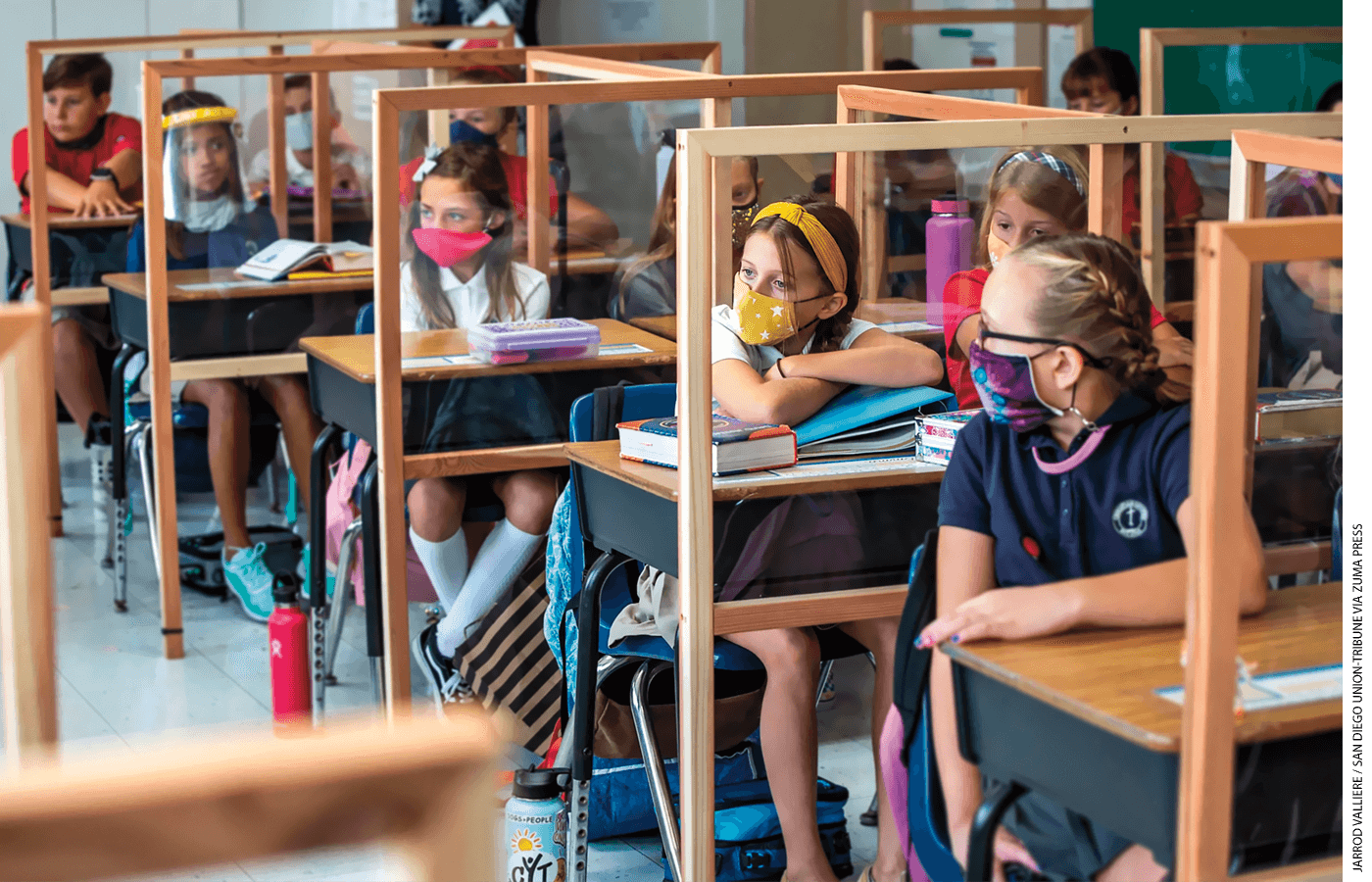
Over the past two years, K–12 schools have implemented a range of steps aimed at slowing the spread of Covid-19, including mask requirements, testing for both asymptomatic and symptomatic individuals, quarantining and isolation, contact tracing, open windows, air purifiers, plexiglass barriers, schedule changes aimed at “cohorting” or reducing building occupancy, and closures. With vaccinations widely available and the Omicron variant mostly waning, should schools now go back to normal? Which, if any, of these pandemic-response measures should be dropped, and which, if any, should be kept? When, and under what conditions?
Our forum on the topic features three essays: one by Paymon Rouhanifard, CEO of Propel America and former school superintendent in Camden, New Jersey, and Dr. Shira Doron, hospital epidemiologist at Tufts Medical Center; another by Gerard Bossard, a public school educator, and Dr. Douglas Rothman, professor at Yale University School of Medicine; and a third by John Bailey, visiting fellow at the American Enterprise Institute.
By Paymon Rouhanifard and Dr. Shira Doron
Tie Precautions to Community Risk Levels
By Gerard Bossard and Dr.Douglas Rothman
Reset Strategies Now, Prepare for the Future
By John Bailey
This article appeared in the Summer 2022 issue of Education Next. Suggested citation format:
Rouhanifard, P., Doron, S., Bossard, G., Rothman, D., and Bailey, J. (2022). Covid-19 Precautions in Schools. Education Next, 22(3), 64-73.





